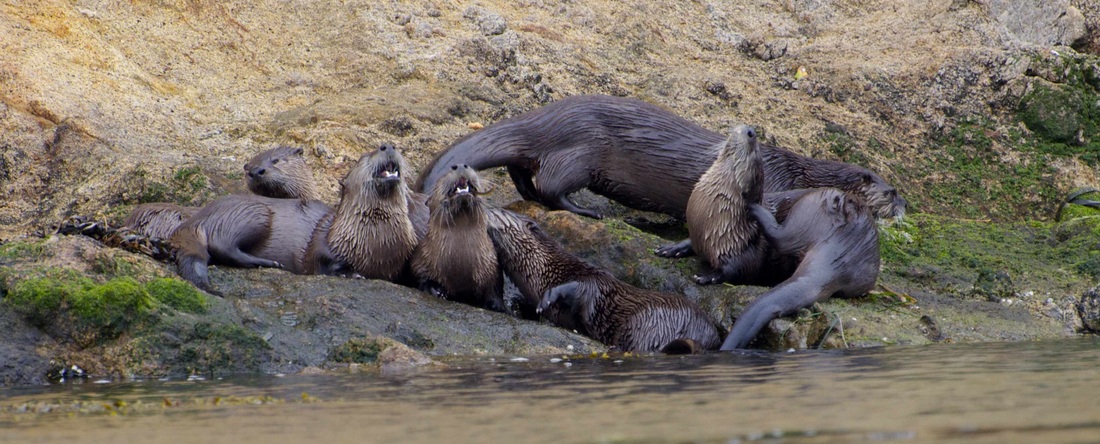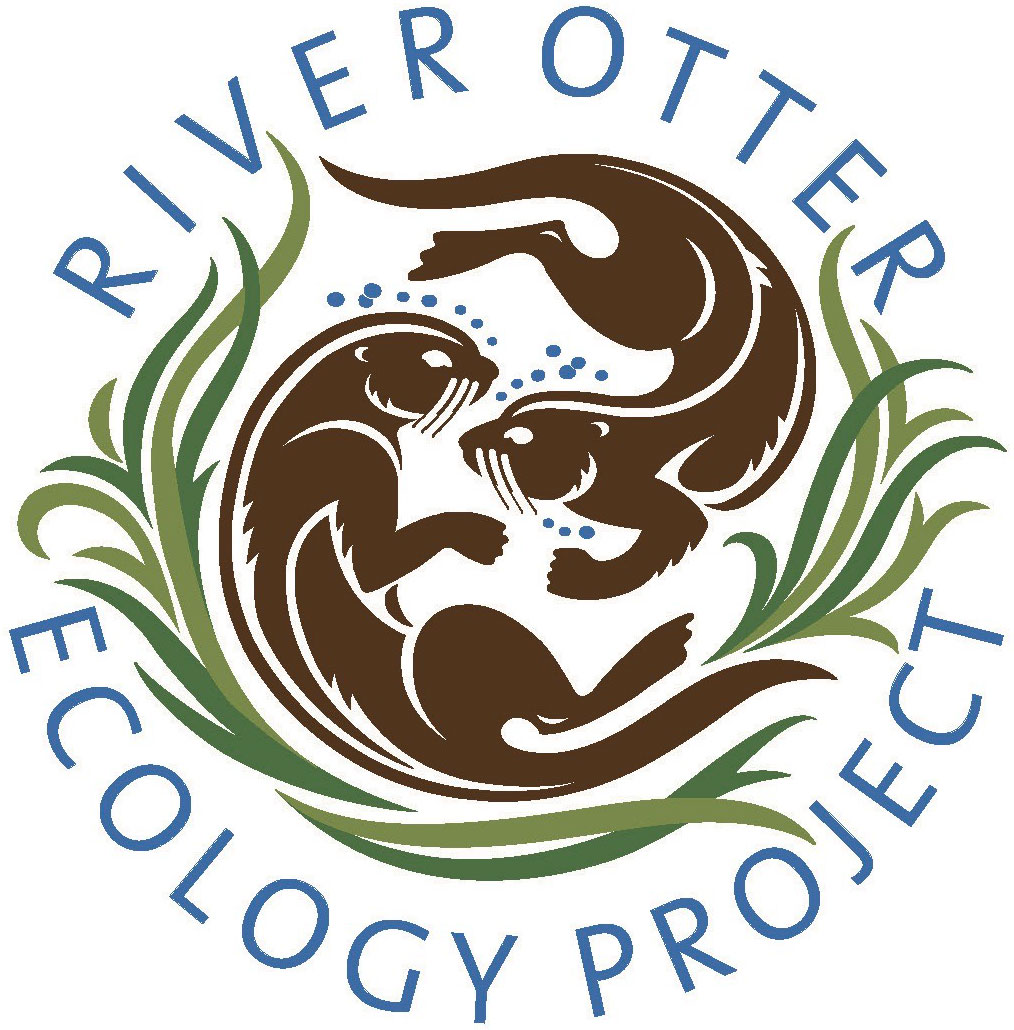By guest blogger Aviva Rossi
April 5, 2012

The 28 square miles of the Corte Madera Creek Watershed supports a large variety of aquatic and terrestrial animals, in addition to the renowned — but much reduced — salmonid populations of our creek. The following is a brief snapshot into the lives of one of our wild neighbors, whose family has been here for many generations, along with, and before ours.
They are the playful and elusive northern river otters, feeding on the fish of the creek. The presence of otters offers a sense of the influence of the wild areas, primarily along the ridges of the valley, which contribute to the healthy watershed so vital to a healthy creek.
Walking slowly upstream in waders, conducting a survey for spawning salmon in a nearby watershed, suddenly we felt a quick underwater bump and brush along our waders. We turned just in time to see the tell-tale sleek brown body of the river otter dive back under the water. There was a local family of otters nearby, and they were just thrilled to have the easily obtained feast that the salmon that have completed spawning provide, and right at the start of the winter months.
Otters are very playful animals, a trait rare in adult wild animals. This species wrestles even as adults, and have been known to make slides down slick river banks and treat themselves to this homemade amusement park. Sliding is also used as an efficient means of travel across grassy slopes or ice. Other forms of play include chasing their tails, playing with captured prey. An otter in San Anselmo Creek was seen rolling energetically in moss before returning to the water and playing with a plastic plant pot.
Their young, called “kits”, are born between February and April. They start playing by the time they are about five weeks old. Although they wean at about 12 weeks, they stay with their mother, and she provides them solid food for almost a year. They are a very social species, and the basic social group is the mother and her young of that year. These basic family groups sometimes include “helpers” consisting of unrelated adults, yearlings, or juveniles. This extended social time provides precious opportunities to see the mother and her youngsters playing along the creek, possibly enjoying the salmonids and crayfish!
